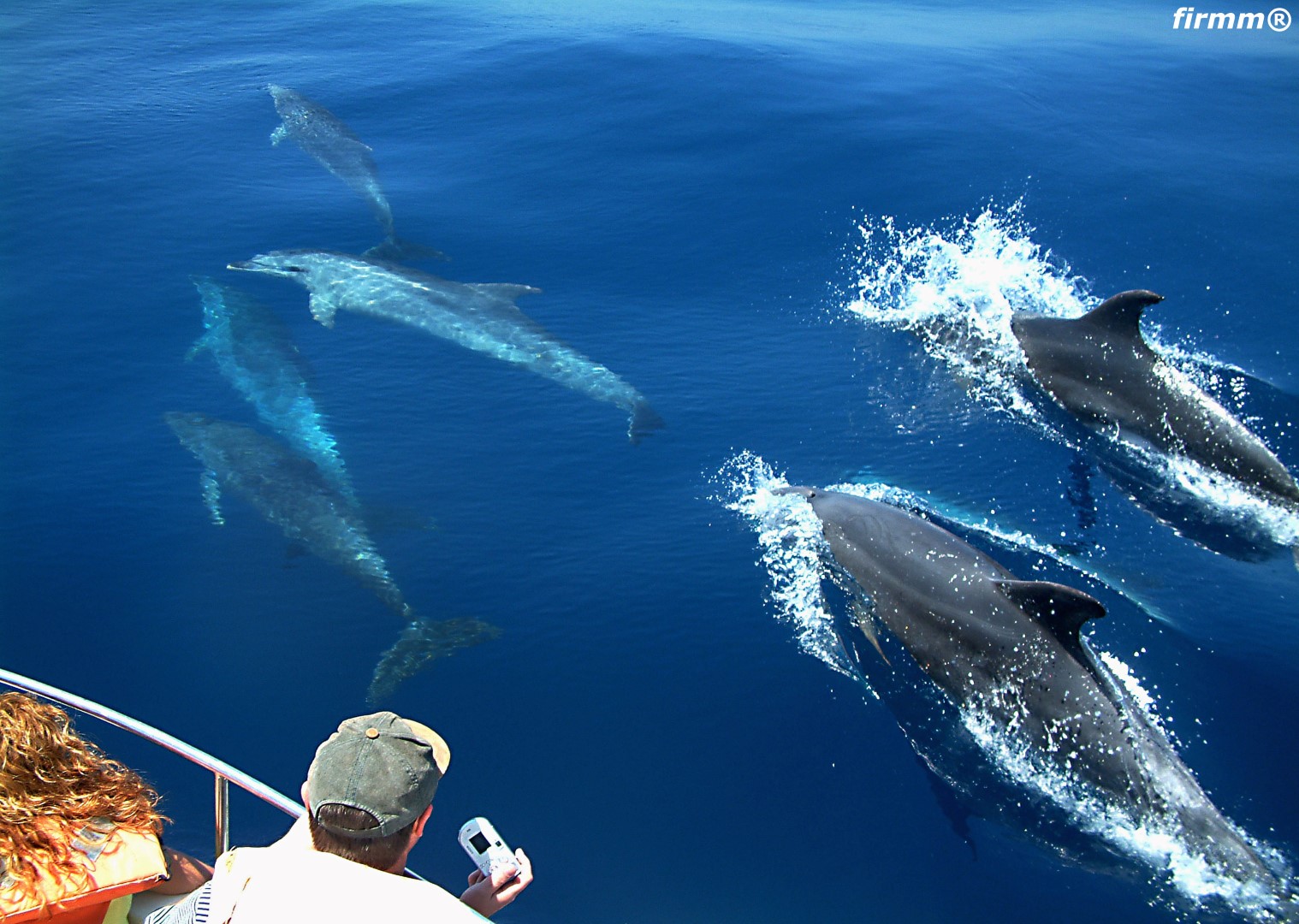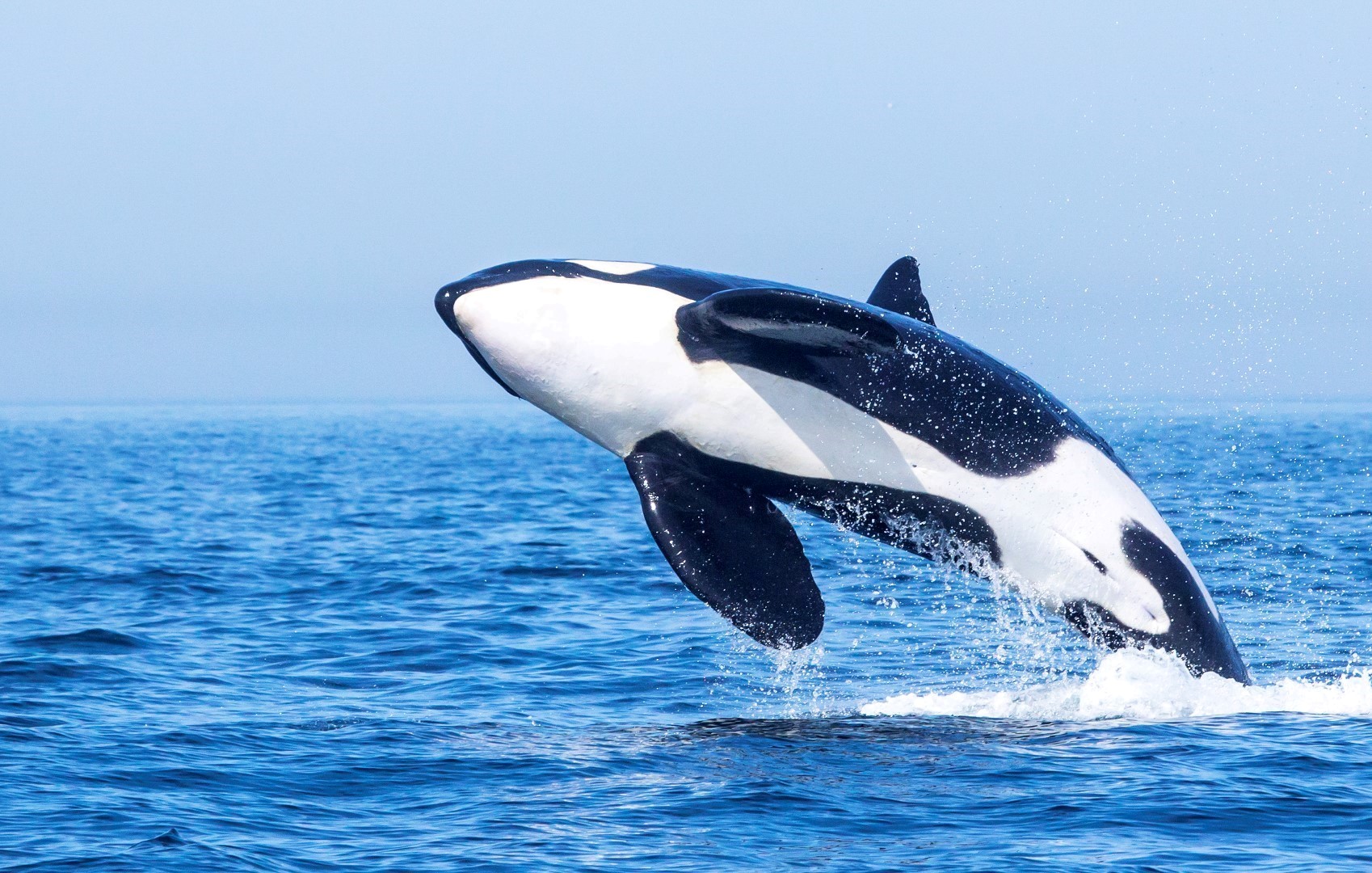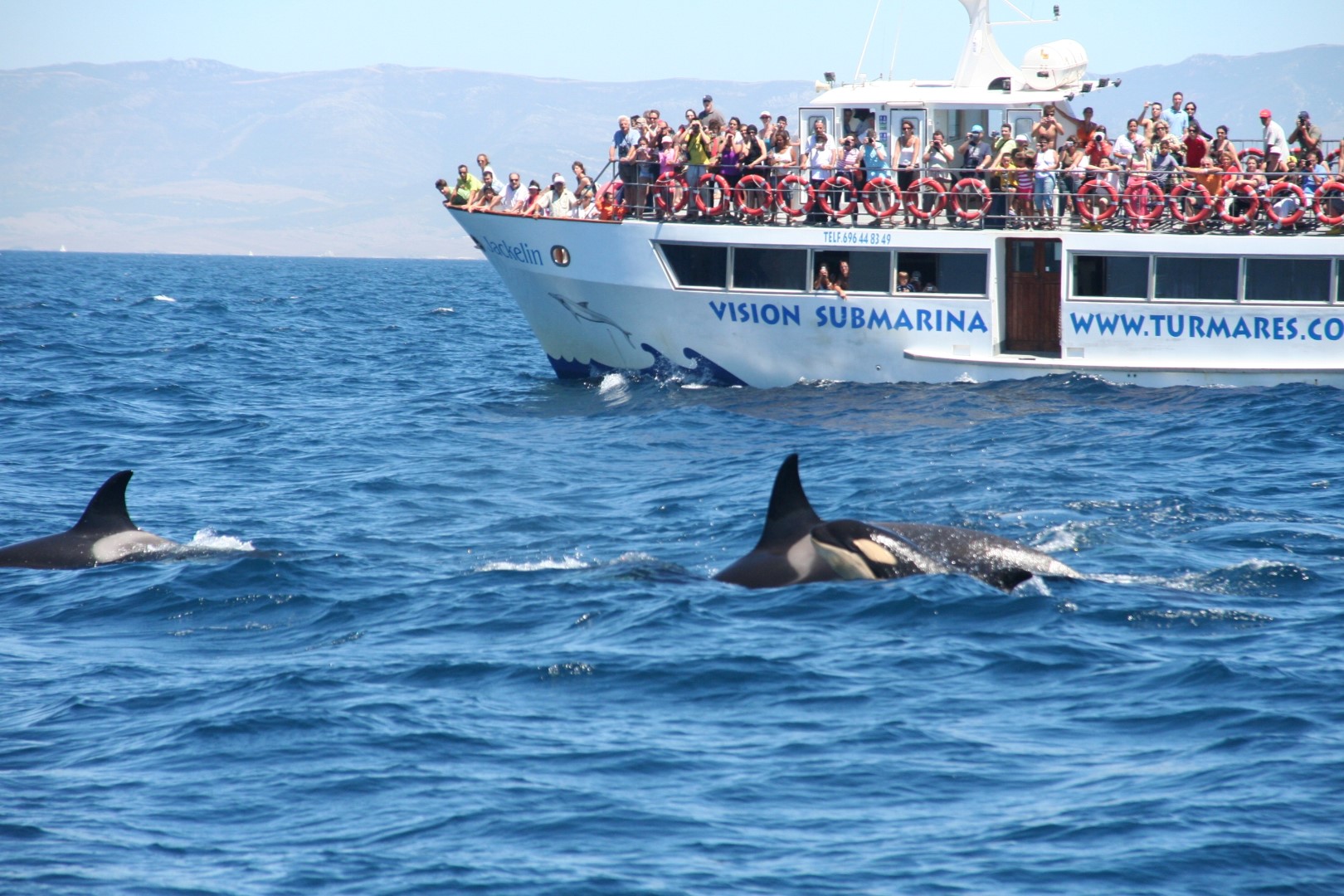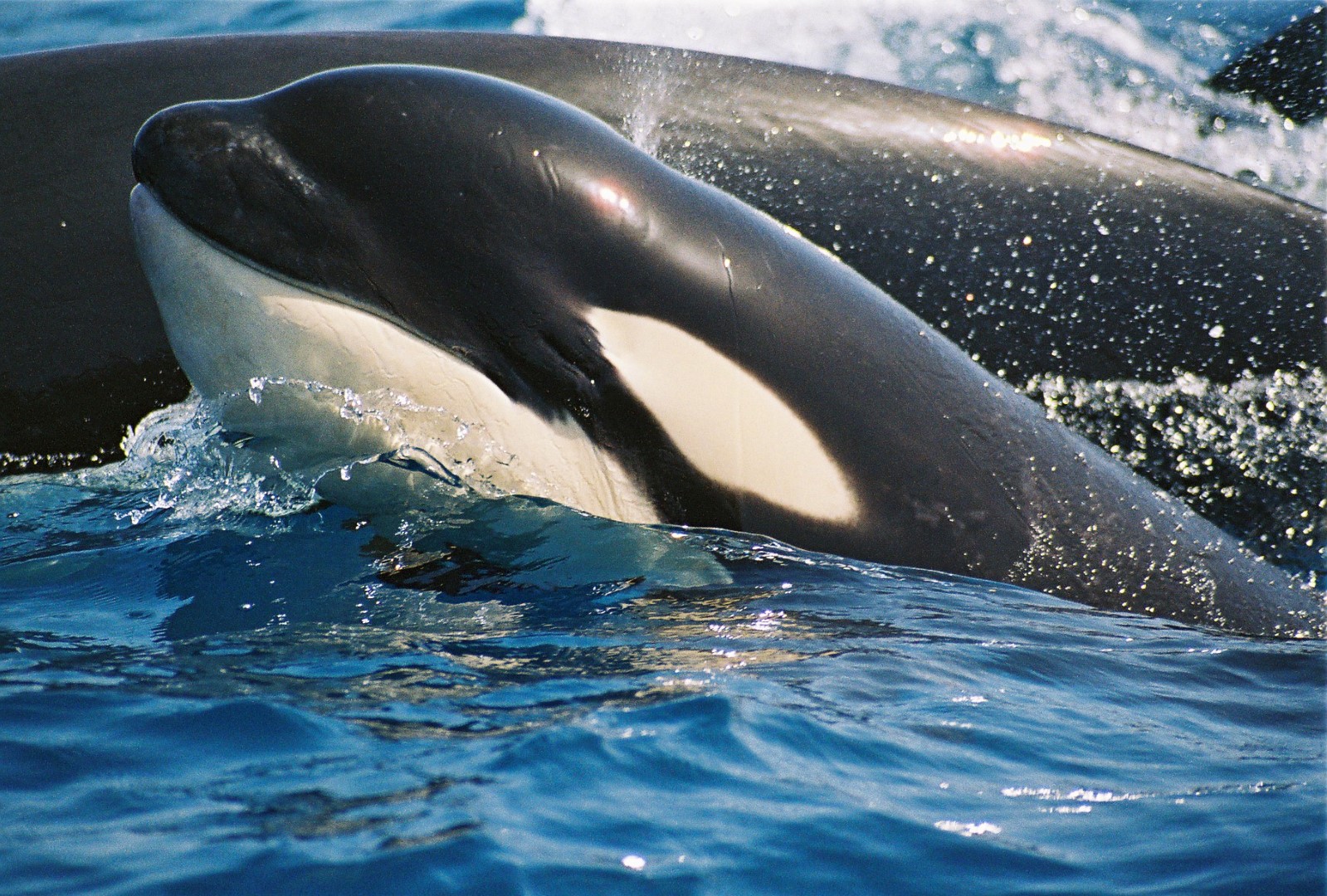Gira tu dispositivo para una experiencia óptima
Gira tu dispositivo para una experiencia óptima


The journey to the heart of the Strait of Gibraltar sets sail from the port of Tarifa and lasts about two and a half hours. It is a great opportunity to learn about the area’s marine life, accompanied by a crew who knows the sea well.
Striped, bottlenose, and common dolphins as well as pilot whales have their habitats in this Strait between Africa and Europe. In spring it is possible to sporadically see sperm whales and mammals as impressive as the minke whale, measuring as much as 20 meters long and weighing more than 80 tons.

Several whale and dolphin watching companies work in Tarifa in the Strait of Gibraltar, one of the most abundant migratory animal passages in the world.: www.aventuratarifa.com, www.turmares.com, www.firmm.org, www.marineatlantes.com and www.marinablue.es
The information booth is in CICAM (Cetacean Interpretation Center and Classroom of the Sea), located in the old fish market, very close to the port. It is an exhibition space for showcasing the marine life found in the Strait.
CICAM is open all year round, but in summer it is open longer and also organizes free guided tours.
The vessels that work in Tarifa estimate that each year about 80,000 people embark on these educational and leisure expeditions on the Costa de la Luz, with at least one daily departure in winter and up to fifteen in summer on various ships and at different times.
These mammals have been in the area for a long time. A Norwegian company that founded a whaling factory there in 1920 has gone through changes of ownership and finally closed forever in 1963, to the benefit of the whales.
Killer whales are seen more frequently in summer because they go in search of tuna that are crossing the Strait of Gibraltar toward the Atlantic Ocean.

Killer whales are between three and eight meters in length and weigh between two and one half to nine tons. It’s astonishing to observe them in their natural environment, playing with the boats, entering and leaving that strip of water that unites the Mediterranean Sea and the Atlantic Ocean.
In addition to CICAM and the companies that carry out whale watching, there are researchers and biologists who have contributed to the awareness of this natural heritage. They have raised awareness of its existence so that the marine population of the Strait might be appreciated, studied and protected.
The Association for Conservation, Information and Research on Cetaceans (CIRCE) organizes courses on whale watching with trips and accommodation.
